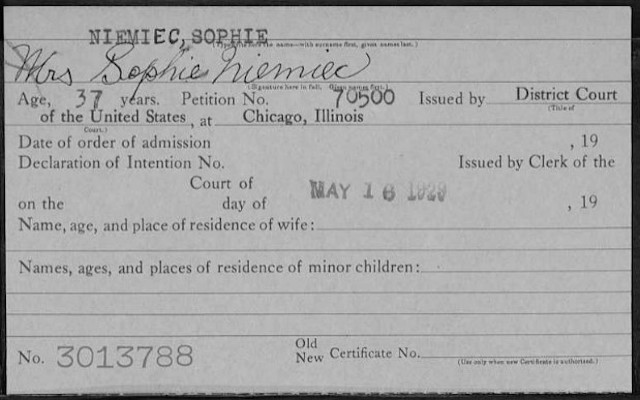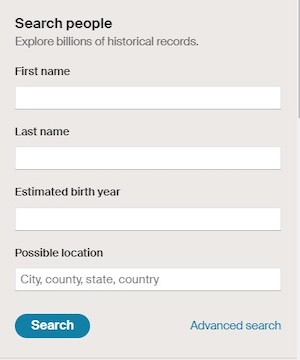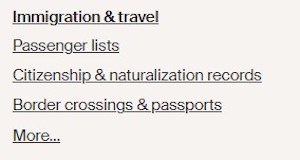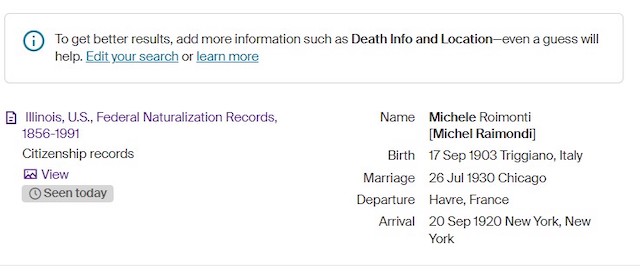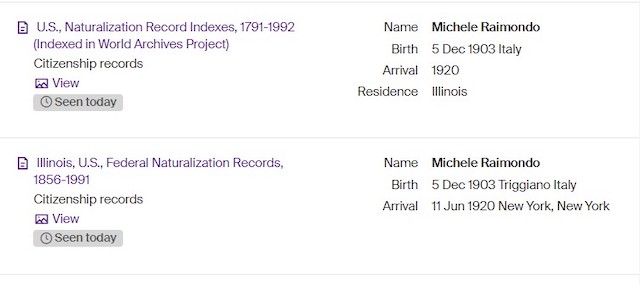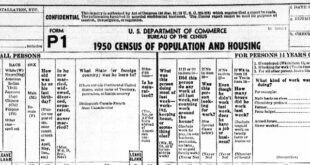Last month we were looking for the town of birth of our ancestor using American records, for those of us who may not know the exact small town our Italian ancestors came from.
We were able to use one search method on FamilySearch to simultaneously find the naturalization records and passenger lists. Last month I showed you: www.familysearch.org, “search”, “records”, “type”, “immigration and naturalization.”
Let’s start with the difficulties of looking for naturalization petitions. As I mentioned last month, there’s no guarantee your ancestor became a citizen. As I forgot to mention last month, there may be no petition for the mother. If her husband became a citizen prior to 1921 or so, she received her citizenship through him, and therefore there will be no petition in her name. The good news is that if he applied for citizenship, that petition will contain his name, birthdate and birthplace, AND hers as well.
Another potential problem is if your ancestor became a citizen before 1906. The forms they used have little to no useful information for us. Some 1904-1906 have a little info, but before 1904, they’re basically useless.
Finding the actual petition is a somewhat tricky process but it can be done. When you search FamilySearch, you will get a bunch of names, birth years, and naturalization years. You need to look at each record in the Naturalization collections to find the one with a known birthdate. If you don’t know the birthdate or the town, you might need to do an intermediate step.
So if you have no way to confirm that the naturalization petition belongs to your ancestor, you should try to find birth certificates of his children in Cook County. The index for those may list the father and/or mother’s birthplaces, and an approximate birth year for each parent. This might give you the clue you need.
Ok we need to talk about the petitions themselves. This is where the fun begins! When you find a naturalization card on FamilySearch, you will see something like these:
Make sure you copy the petition number from the card. You will need it later no matter which court they were naturalized in.
The first card is typical of what you might find on the 1840-1950 collection. Note the area “Title and location of court” on the right side, just above the middle. You could see one of three possibilities here:
1) U.S. District
2) Superior Court, Cook County IL
3) Circuit Court, Cook County, IL
There are other possibilities but let’s focus on these three. If they were naturalized in either 2) or 3), you will have to write to the Cook County Circuit Court Archives. https://www.cookcountyclerkofcourt.org/archives
You might also be able to go to the Illinois Regional Archives Depository (IRAD) at Northeastern Illinois University, at the Ronald Williams Library. The archive is only open 9 a.m.-4 p.m. Monday thru Friday. But they have all the county naturalizations on microfilm. You can also find these while at the Family History Library in Salt Lake City.
Whether you write to the court, or you try to find it for yourself at the IRAD archive, or even if you go to Salt Lake City, you need the name of the court and the petition number. This will help figure out the correct roll of microfilm that contains the petition you need. More on that in a moment.
If your petition court is U.S. District, then you can find the petition by going to a FamilySearch Center or an affiliate library and get on their Ancestry.com Library account. (Yes, you can do this at home if you are a paid Ancestry subscriber).
You can click on “Advanced Search” on the right side of the home page, just below “Search People”.
On the next screen, you can select “Citizenship and naturalization records” on the right side
Here you can search for your ancestor’s name, and see results that will let you just click the name and view the petition directly! You’ll see “view” under the record, and you can just see the petition and the spouse and children who were alive at that time. This should help you determine if you have the right petition.
Unfortunately, Ancestry only has the U.S. District Court records that can be directly searched. You can find the same records on FamilySearch but it is much more complicated. Even though you can find the index card on Familysearch by searching for the name, you cannot find the petition the same way.
If you want, you can search Ancestry first. The same search may find both the card and the petition. Example, Michele Raimondo born 1903.
If the record shows up in “U.S. Naturalization Record Indexed 1791-1992 (Indexed in World Archives Project), then clicking “View” you should see the index card only.
If the record shows up in “Illinois, U.S., Federal Naturalization Records 1856-1991”, the “View” will take you directly to the petition.
When you find the petition, you should always go backward to see the Declaration of Intention and other documents. The Declaration just might have a photo on it!! The Certificate of Arrival will show the ship name, arrival date and the name spelling that appears on the passenger list.
Next month we will hunt for passenger lists!
 Fra Noi Embrace Your Inner Italian
Fra Noi Embrace Your Inner Italian



